In the presence of eagles
Along the Skagit River, the month of December marks the beginning of an incredible display of interaction among two of western Washington’s most prominent species – eagles and salmon.
The Skagit, whose headwaters begin near Hope, British Columbia, travel by the North Cascades Environmental Learning Center, and end in the estuarine confluence of Skagit Bay southwest of Mt. Vernon, is the Puget Sound’s largest river and second in size only to the Columbia in Washington. All 5 Pacific salmon runs, including sockeye, chum, chinook, pink and coho, reach up along various locations of the Skagit.
With an especially high pink salmon run, an estimated 1.2 million salmon by Washington state fish biologists, along with a current chum spawning run, this season could make for some surprising eagle sights.
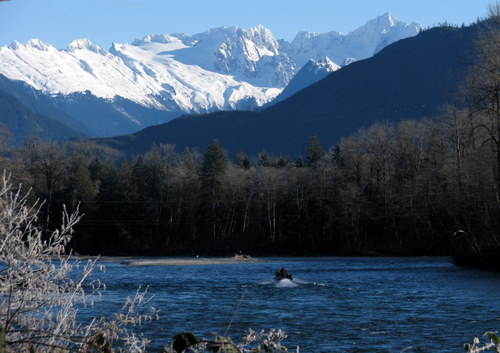 The Skagit River is a designated Wild & Scenic River System
The Skagit River is a designated Wild & Scenic River System
Of the 162 miles of winding water through deep mountain gorges, farmlands and evergreen forest, a special section of the Skagit River is home both to spawning salmon and feeding eagles alike. Between the towns of Rockport and Marblemount, where the Sauk River enters the Skagit and spanning an area of 8,000 acres, the Skagit River Bald Eagle Natural Area exists. Many organizations have purchased land to contribute specifically to the protection, conservation and education of bald eagles and their habitat, including the Forest Service, Washington Dept. of Natural Resources and Washington Dept. of Fish and Wildlife, Seattle City Light, The Nature Conservancy, Skagit County Parks & Recreation and Washington State Parks.
Through the efforts of these private, county, state, and federal partners, aspiring eagle watchers can come between late December and early February to witness hundreds of bald eagles feeding on the spawning chum and pink salmon runs before returning to breeding in March.
On the beautifully clear and cold morning of December 10th, North Cascades Institute’s graduate students ventured down from their abode at the Environmental Learning Center to the Marblemount Fish Hatchery to learn about the relationships between spawning salmon and bald eagles from Cohort 8’s Katie Trujillo.
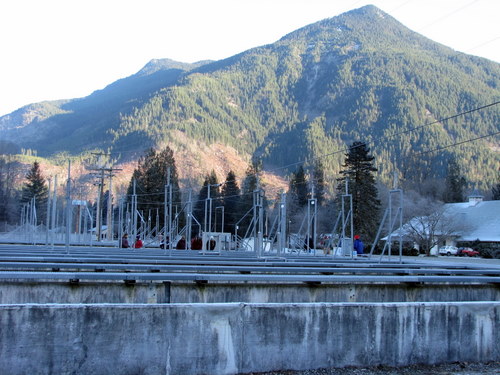 The Washington Dept. of Fish & Wildlife manages the Marblemount Fish Hatchery
The Washington Dept. of Fish & Wildlife manages the Marblemount Fish Hatchery
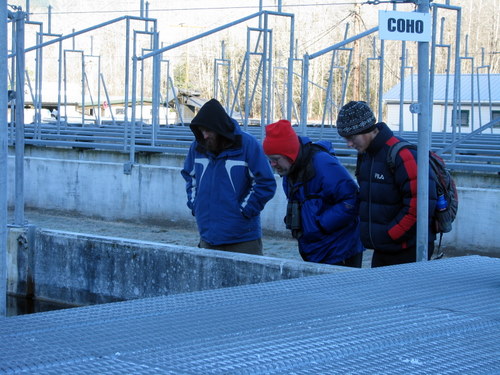 Professor John Miles with several guest participants observing young Coho salmon
Professor John Miles with several guest participants observing young Coho salmon
In 18 degree weather, we discussed the evolutionary history of Pacific salmon and received a tour of the facility from a local employee, and watched as several salmon swam upstream toward the hatchery, their coloration and character indicative of their time for spawning.
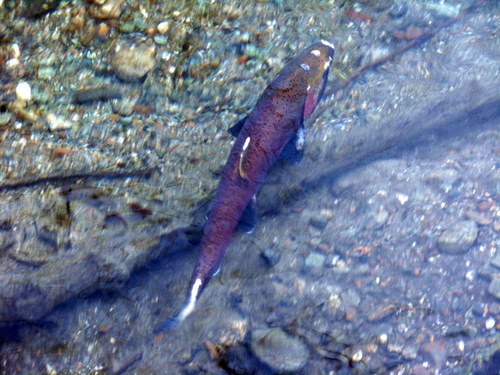 A salmon swims upstream toward the Fish Hatchery finding a place to spawn
A salmon swims upstream toward the Fish Hatchery finding a place to spawn
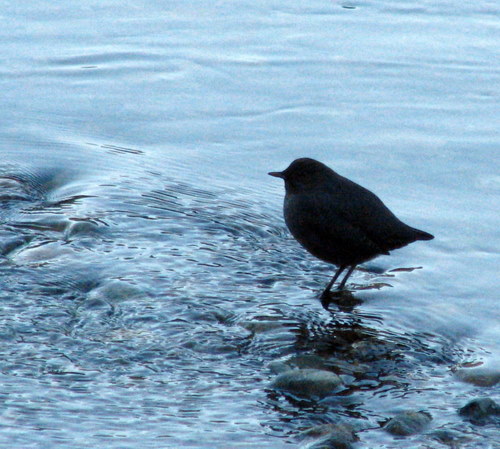 A water ouzel bobs along the stream side in search of food
A water ouzel bobs along the stream side in search of food
Eager for some eagle sights, we ventured down toward Milepost 100 along Highway 20 with a hope to see some feeding taking place. With guidance from Katie, we learned how to identify the general ages of the eagles based on their plumage – the more commonly recognized bright white head, yellow beak, and dark body is that of a 5-year adult, while juvenile plumage is a dark brown, with a black beak and tail. We also learned that eagles spend the majority of their time in winter conserving energy used in breeding, with only about 2% of the time spent feeding in the early morning and late evening.
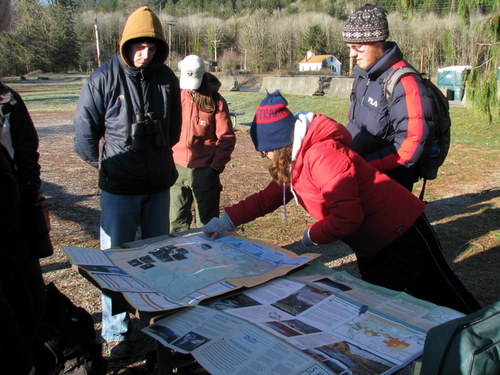 Katie Trujillo explaining the Skagit River Bald Eagle Natural Area to students
Katie Trujillo explaining the Skagit River Bald Eagle Natural Area to students
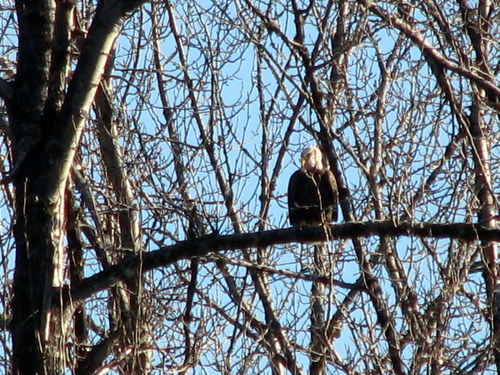 Bare deciduous trees along the river are common places you can spot bald eagles
Bare deciduous trees along the river are common places you can spot bald eagles
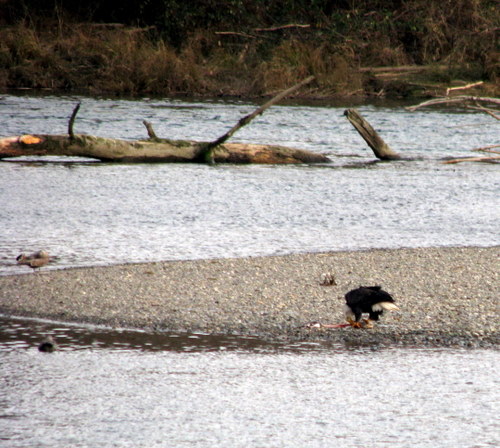 A bald eagle feeds on a dead salmon carcass near Milepost 100 along Highway 20
A bald eagle feeds on a dead salmon carcass near Milepost 100 along Highway 20
With the scenic background of El Dorado Peak beyond, we watched several eagles fight over a dead salmon carcass, clean themselves, and cackle. Through a spotting scope, I watched one particular bald eagle yawn.
Eagle watching with magnificent views of El Dorado Peak
If you are interested in planning a trip along the Skagit River to eagle watch this season, visit the Skagit River Interpretive Center in Rockport before embarking on your journey. North Cascades Institute also offers a class in January – Eagles and Salmon: Northwest Icons of the Skagit – taught by wildlife biologist Libby Mills.
Are you keeping an eagle count along the Skagit? If so, let us at Chattermarks know!


Fabulous Kelsi! : ) More than great to spend more time with Cohort 9!!! See you all again soon.
Great info Kelsi and great shots of the area – when can we go again and have the same kind of glorious weather?
Wonderful article and photos of a great day I regrettably spent in bed! Thank you Kelsi for making Katie’s extraordinary session available virtually!
cheers,
Gene
Wildflowers add a lot of color to desert landscapes. Share this Arizona wildflower guide with your readers so that they enjoy them too.
Here’s the HTML code that you can copy and paste onto your website.
Desert Wildflowers in Arizona
Thank you,
Schafer Pugh